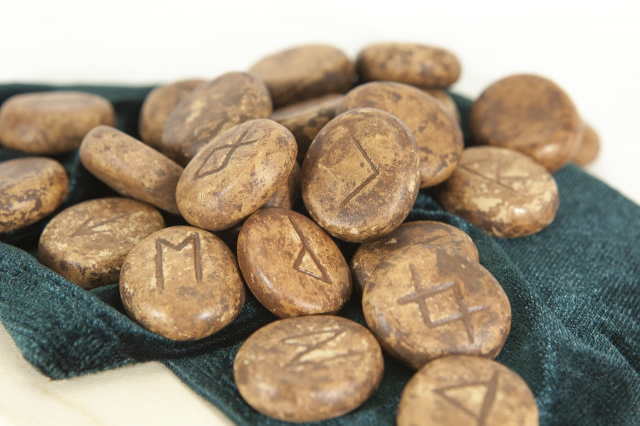Runes are a writing system developed and used by the Norse and other Germanic peoples. The runes functioned as letters, but they were much more than letters in the sense that we understand the term today. The word "rune" means "letter", "secret" or "mystery", and its original meaning, preceded the adoption of the runic alphabet, has been simply a "silent" message.
Each rune has a name that hints at the philosophical and magical meaning of its visual form and the sound that represents it. The T rune, called * Tiwaz in the Proto-Germanic language, is named after the god Tiwaz (known as Tyr in the Viking age).
The visual form of the T rune is an arrow pointing upwards (which surely also hints at the god's prominent role in warfare). The T rune was often carved as a standalone ideograph, apart from the spelling of a particular word, as part of the spell to ensure victory in battle.
The runic alphabets are called "futharks" (Fehu, Uruz, Thurisaz, Ansuz, Raidho, Kaunan), in the same way that the word "alphabet" comes from the names of the first two Semitic letters (Aleph Beth)
There are three main futharks:
The 24-character Elder Futhark, the first fully formed runic alphabet.
The 16-character Yohar Futhark, which began to diverge from the Elder Futhark around the beginning of the Viking Age (c. 750 CE) and eventually replaced that ancient alphabet in Scandinavia; Y,
The 33-character Anglo-Saxon Futhorc, which was gradually altered and added to the Elder Futhark in England.
In some inscriptions, the twenty-four runes of the Elder Futhark were divided into three ættir (Old Norse "families") of eight runes each, [6] but the meaning of this division is unfortunately unknown.
Runes were traditionally carved out of stone, wood, bone, metal, or some similar hard surface rather than being drawn in ink and pen on parchment. This explains its sharp and angular shape, which suited the environment well.
Runes used as magical symbols
The word rune means "secret", "mystery". In the sagas, we learn that the word rune is not only used for carved signs, but also for certain songs, magic formulas, secret abilities, and for hidden secrets in skaldic poetry.
Runic magic was used to predict the future; as a form of protection; cast spells; to cure diseases; to bestow love, etc.
However, it could be quite risky if the runes were carved by unqualified people. In Egil's saga, we learn that a girl becomes ill because a lover in love has carved runes on a whale to awaken her love. Egil finds the runes under the girl's bed. He scrapes the signs, burns the whale, and then carves new runes that he places under the girl's pillow, leading her to recover.






